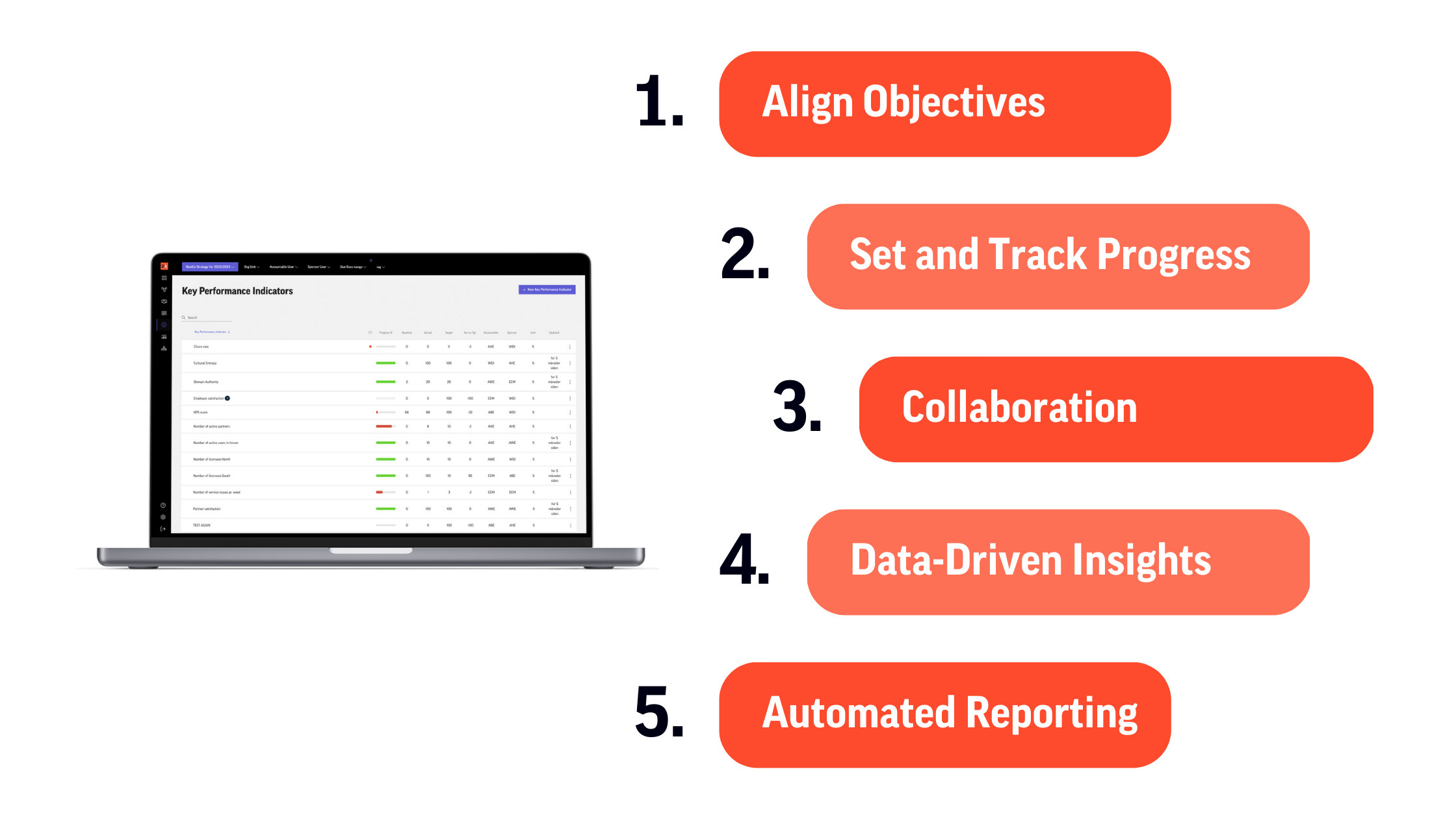OKR vs KPI: What’s the difference?

OKRs (Objectives and Key Results) and KPIs (Key Performance Indicators) are both performance management tools with different purposes. OKRs are goal-setting frameworks used to align a company's or an individual's objectives with their broader business strategy.
An OKR consists of a clear, specific, and measurable objective and a set of key results that track progress toward that objective. They help ensure that everyone in the organization has the same objectives and that their individual efforts are aligned with the company's overall strategy.
KPIs, on the other hand, are metrics used to evaluate the success of a specific aspect of a business. KPIs track progress toward a particular goal and provide a way to measure success or failure. They are often used to measure the performance of a particular department or aspect of a business. By regularly monitoring and tracking KPIs, organizations can identify areas for improvement and make data-driven decisions to optimize performance and execute their business strategy effectively.
In summary, OKRs provide a high-level framework for setting and tracking progress toward objectives, while KPIs are used to track specific metrics and measure success.
Which performance management tool should you use?
Which tool to use depends on the specific needs and goals of an organization. Both OKRs and KPIs can be useful performance management tools, but they serve different purposes and are used in different ways.
It's not a matter of which is better, but rather determining the most appropriate tool for a given situation. An organization may use both OKRs vs KPIs, as each provides valuable information for performance management. Below we share some OKR vs KPI examples to help you see the difference more clearly:
OKR Example
Objective: Increase website traffic by 20% in the next quarter.
Key Results:
- Publish five blog posts per week to drive organic traffic.
- Launch two email marketing campaigns per month targeting current subscribers.
- Implement SEO best practices on website to improve search engine ranking.
- Increase social media following by 10% through targeted advertising.
- Track website traffic using Google Analytics and report results to stakeholders.
This OKR provides a clear, specific, and measurable objective, along with a set of key results that tracks progress toward that objective. Each key result is actionable and can be used to measure success. By focusing on these specific activities, the organization aims to achieve its goal of increasing website traffic by 20%.
KPI Example
KPI: Customer Satisfaction
Metric: Net Promoter Score (NPS)
Method of measurement: Survey customers on a regular basis to determine their level of satisfaction with the company's products or services, and calculate the NPS based on the responses.
The NPS is a commonly used metric for measuring customer satisfaction, and it provides a way to track customer feedback over time. The company can use this information to identify areas for improvement, measure the success of customer satisfaction initiatives, and make data-driven decisions to improve the customer experience.
OKR vs KPI Pitfalls
Despite the many advantages of utilizing performance management tools such as OKRs and KPIs, there are also numerous common pitfalls to be aware of:
| OKR Pitfalls | KPI Pitfalls |
|
|
Despite these pitfalls, OKRs and KPIs are useful tools for driving strategic alignment, tracking progress, and ensuring that the organization is focused on its most important initiatives. They provide focus and alignment by setting clear, measurable goals and objectives that are tied to the larger strategy of the organization.
What is clear, however, is that an organization must prioritize strategic alignment around how they work with performance management tools. Digital strategy execution management platforms, for example, provide a single source of truth for tracking OKRs and KPIs, making it easier to see how individual and organizational goals are aligned and interrelated.
How can DecideAct Help?
Both OKRs and KPIs are critical components of successful strategy execution, as they provide a way to ensure that everyone in the organization is working toward the same objectives and the company's performance is being monitored and optimized.
DecideAct can help organizations effectively manage their OKRs vs KPIs in several ways:
- Align Objectives: The platform can help organizations align their objectives with their broader business strategy and ensure everyone in the organization is working toward the same goals.
- Set and Track Progress: The platform provides a centralized repository for setting and tracking progress toward OKRs and KPIs. This allows organizations to monitor progress in real-time and identify areas for improvement.
- Collaboration: The platform can facilitate collaboration between teams, departments, and individuals to ensure everyone is working together to achieve the company's objectives.
- Data-Driven Insights: The platform can provide data-driven insights into performance, allowing organizations to make informed decisions about their strategy and optimize their operations.
- Automated Reporting: The platform can automate the reporting of OKRs vs KPIs, eliminating the need for manual reporting and freeing up time for more strategic initiatives.

Overall, the DecideAct platform is a powerful tool—not only to manage OKRs and KPIs and execute business strategy effectively, but to harness them to lead the organization forward. By aligning objectives, tracking progress, and providing data-driven insights, the DecideAct platform helps organizations make better decisions quickly, act efficiently, track consistently, and adapt seamlessly.
See for yourself with a free trial!










